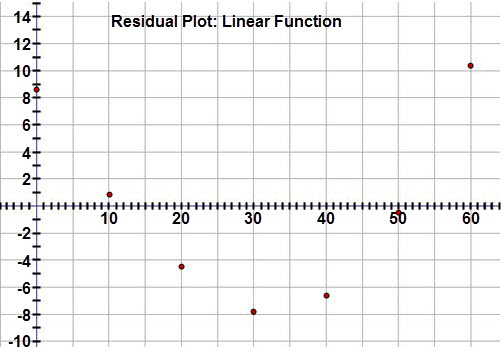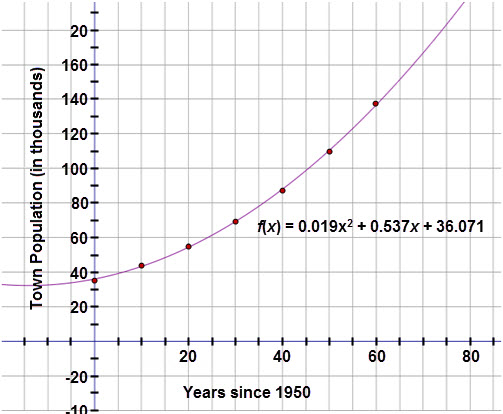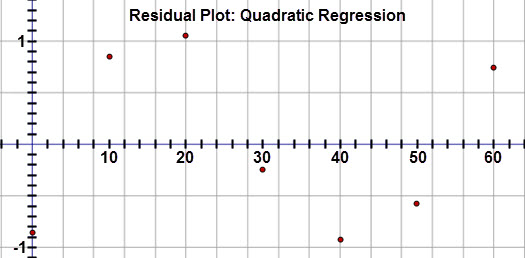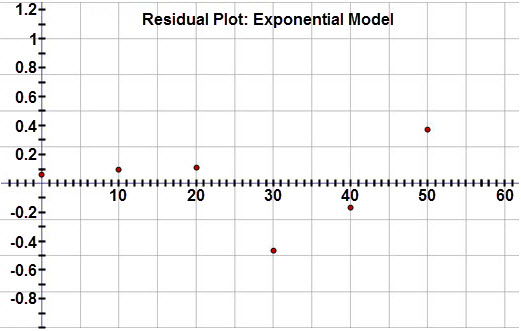Which Model Makes Sense?
 Resources for this lesson:
Resources for this lesson:
> Glossary ![]()
> Calculator Resources ![]()
> Teacher Resources: Instructional Notes ![]()
Compare your response with the solution below:
Create and Analyze
- Upon initial inspection, a linear model appears to be a good fit.

Test and Confirm
- The correlation coefficient is 0.981 and the scatter plot looks fairly linear. However, when examining the residual plot, there is a clear pattern to the residuals, meaning that a linear model is not the best fit.

- While the quadratic curve seems to fit the data well, the residual plot reveals a clear pattern. This indicates that a quadratic model is not the best fit.
- Since the data is continuing to increase, the only other model that makes sense is an exponential model. The exponential curve of best fit equation is y = 35.156(1.023)x.


The residuals for the exponential model are:
Years since 1950 |
0 |
10 |
20 |
30 |
40 |
50 |
60 |
|---|---|---|---|---|---|---|---|
Residual value (in thousands) |
0.080 |
0.093 |
0.106 |
−0.469 |
−0.172 |
0.369 |
−0.011 |
The residual graph is random and close to zero, confirming that the exponential model is a good fit for the data.

It appears that an exponential model is the best fit for this data set.


